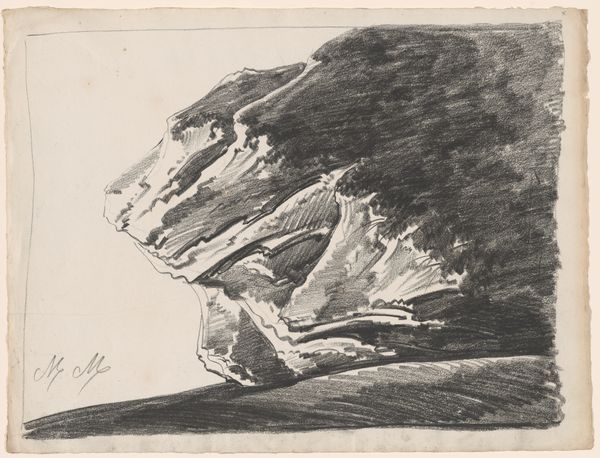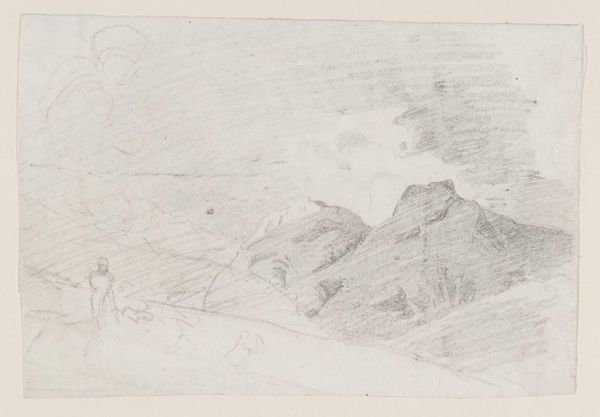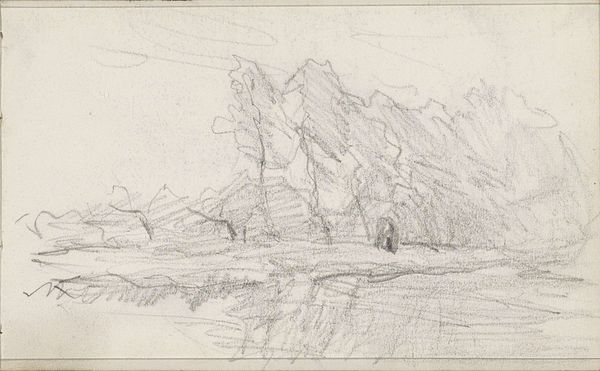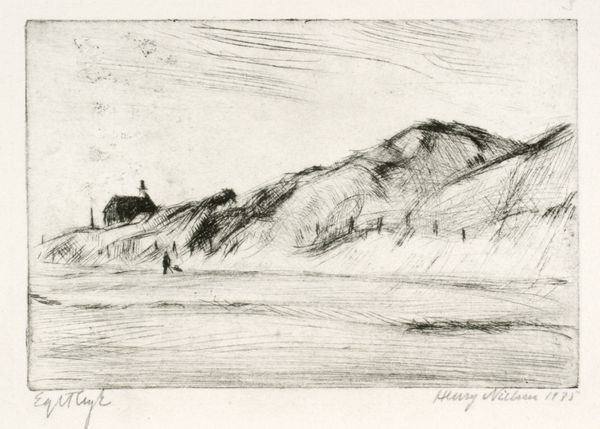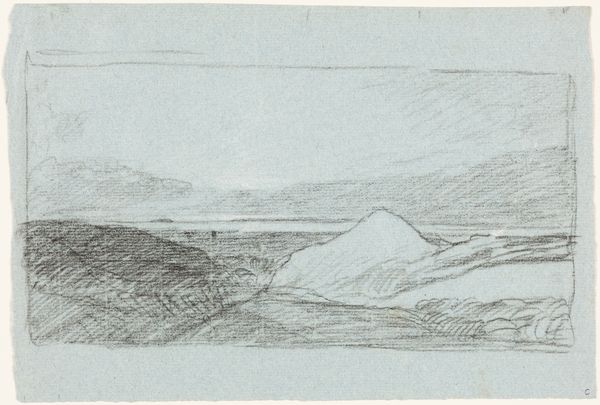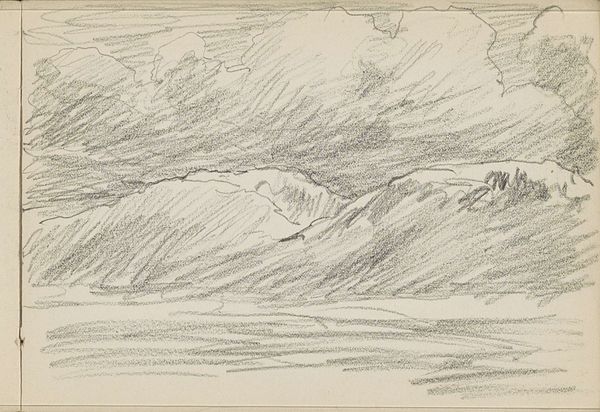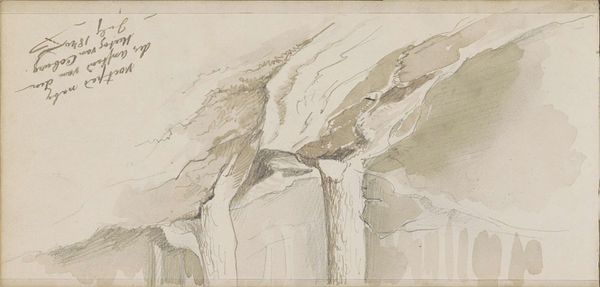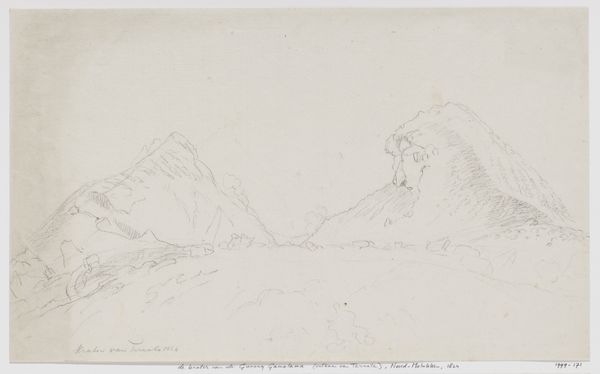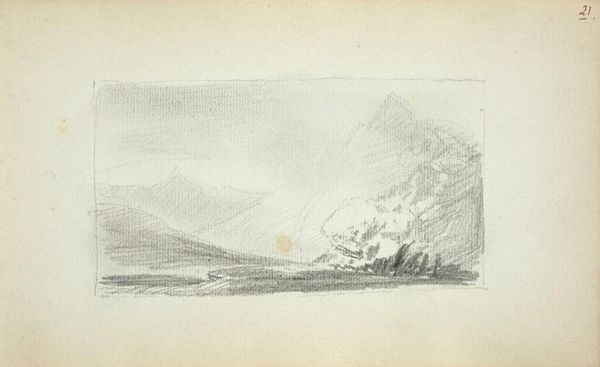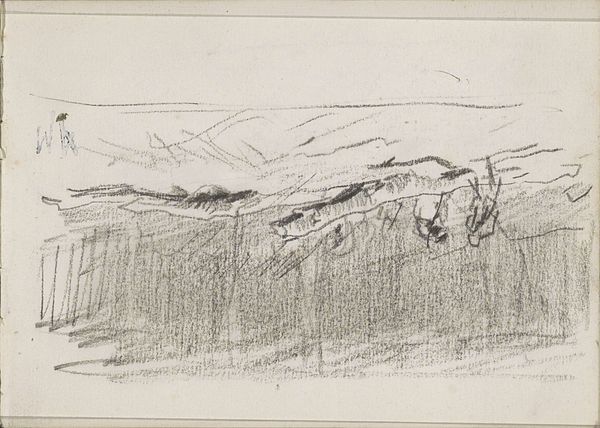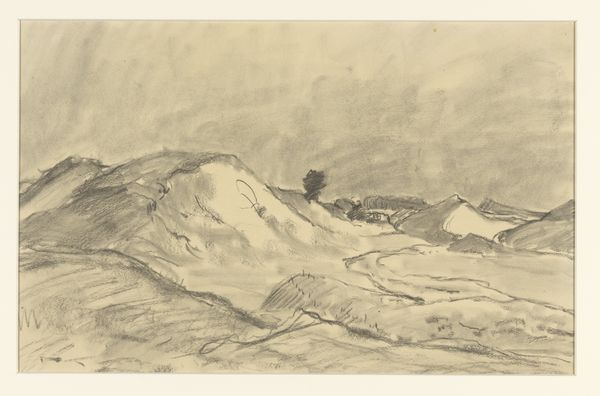
Copyright: Rijks Museum: Open Domain
Curator: Good morning. We are looking at Isaac Gosschalk’s "Bergen bij Harz," executed between 1860 and 1861, using pencil on paper. Editor: What strikes me first is the stark, almost melancholic atmosphere conveyed through such a minimal palette. The looming mountain feels less a celebration of nature and more an intimation of something vast and perhaps unknowable. Curator: Precisely. Note the artist's dedication to rendering tonal gradations using solely pencil. This work exists at an interesting intersection of realism and Romanticism. Consider the artist's careful consideration of light and shadow. Notice the deliberate hatching and cross-hatching that define the forms. Editor: The symbols of Romanticism are certainly here, with a sense of awe and the sublime. This echoes, of course, the Romantic era's focus on powerful, emotional experiences through connection to nature, doesn't it? One reads those towering slopes and crags and intuits both power and the potential danger... but also, in that almost skeletal-seeming foreground, perhaps also something of memento mori. Curator: Indeed. The foreground offers formal contrast with its tighter, darker strokes versus the fading background planes, achieved through variations in line weight. Editor: It feels steeped in the 19th-century mindset—the search for the profound in the external world. The Harz mountains in Germany carried significant symbolic weight, often linked to Germanic myths and folklore. So one immediately begins looking for layered meaning, even in what seems like a basic pencil drawing of this mountainscape. The almost-ghostly peaks beyond seem to suggest memory, of course... they haunt the picture plane, much as the history haunts the land. Curator: An astute observation! Now, notice how Gosschalk created depth with just a few essential marks. There's the skillful simplification, or distillation of a scene into core structures and values. Editor: Thank you. It speaks to a period grappling with man's place in nature. An era grappling with the eternal verities through landscape. Curator: Absolutely. Thank you for joining me.
Comments
No comments
Be the first to comment and join the conversation on the ultimate creative platform.

